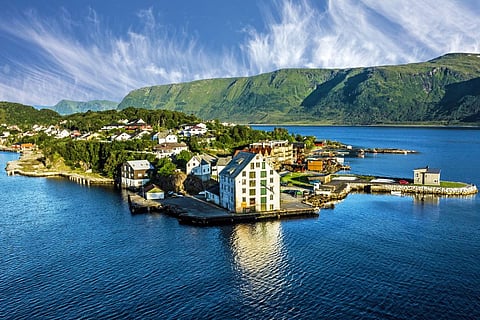
- Destinations
- Experiences
- Stay
- What's new
- Celebrating People
- Responsible Tourism
- CampaignsCampaigns
- Subscribe
- Buy Now

In a landmark move to combat the growing challenges of over-tourism, six popular travel destinations — Greece, Spain, Italy, Norway, Thailand, and Japan — are set to introduce new tourist taxes in 2026. Here's what you should know.
The new taxes aim to ease the strain on overcrowded destinations, protect cultural landmarks, and preserve delicate natural environments increasingly affected by heavy tourist traffic. Revenue from the new levies will be channelled into improving local infrastructure, supporting environmental protection, and encouraging sustainable travel practices.
Officials stress that the taxes are not meant to discourage visitors, but to ensure tourism remains a positive force for both residents and travellers. By reinvesting funds into community projects, public spaces, and conservation efforts, the participating countries hope to establish a fairer, more sustainable tourism model.
From February 2026, Thailand will begin charging foreign visitors a 300-baht (approximately INR 820) tourism entry fee under the “Kha Yeap Pan Din” or “stepping onto Thai soil” scheme. The levy will be collected upon arrival by air, land, and sea, with 70 baht allocated to medical and accident insurance for travellers, and the remainder funding tourism infrastructure and safety upgrades. Airlines and border authorities will manage collection, with exemptions likely for work visa holders and frequent cross-border visitors. The initiative forms part of Thailand’s broader strategy to balance booming tourism with long-term sustainability and local investment.
From 2026, Japan will implement a series of new tourist taxes and fees to manage overtourism and fund infrastructure and cultural projects. Measures include a tiered hotel tax in Kyoto starting March, a ¥4,000 fee for Mount Fuji climbs, and an increased departure tax from the fiscal year 2026.
Japan will also increase fees for single- and multiple-entry visas. From November 2026, instant duty-free shopping will be phased out in favour of a tax-refund system, and many attractions will introduce dual pricing for foreign visitors. Funds generated from these measures will be invested in airport infrastructure, enhanced security, and national initiatives such as free high school education, while helping to preserve the country’s cultural and natural heritage.
Venice, Italy, has tightened its day-visitor fee to help manage tourist numbers in the historic centre. From April to July, visitors entering on designated peak days must pay between €5 and €10. Those who book at least three days in advance and receive a QR code will pay €5, while last-minute arrivals face a €10 charge. The fee is enforced daily from 8:30 am to 4 pm across 54 peak days, with travellers required to present their QR code at key entry points, including the train station. The measure is part of the city’s ongoing efforts to balance tourism with the preservation of its cultural heritage and public spaces.
Spain is broadening its regional tourism taxes, with higher rates set in popular areas such as Catalonia and Barcelona, aiming to fund sustainability and infrastructure projects. Taxes vary by region and accommodation type, including hotel star ratings. In Barcelona, the city surcharge will rise from €4 per night in 2025 to €5 in 2026 and is projected to reach €8 by 2029. Combined with regional levies, luxury hotels in the city could face charges of up to €15 per night. Other regions, including Galicia, the Basque Country, and the Balearic Islands, are also introducing or expanding their own taxes as part of a wider effort to manage tourism responsibly.
Greece has introduced a seasonal disembarkation fee for cruise passengers to help manage overtourism, with charges added directly to cruise fares and collected by the cruise lines. The cost varies by island and season, with Santorini and Mykonos facing the highest fees: €20 per person during the peak months of June to September, falling to €12 in the shoulder seasons of April, May, and October, and €4 in the off-season from November to March. Other Greek ports are charged €5 during peak season, €3 in shoulder periods, and €1 in the off-season. The revenue supports port maintenance, waste management, and crowd control, ensuring popular islands remain sustainable while visitors enjoy a seamless arrival experience.
Norway will roll out a municipal tourist tax from summer 2026, enabling selected municipalities to charge up to 3% on overnight stays and cruise ship visits. The scheme is designed to fund local infrastructure and address overtourism in high-traffic areas such as the fjords and Arctic regions. The optional tax will apply to hotels, guesthouses, short-term rentals, and cruise passengers, while campervans, tents, and boats remain exempt. Revenue will support essential services including hiking trails, public toilets, parking, and signage, helping communities cope with rising visitor numbers. Municipalities must be approved to levy the tax, ensuring it targets locations where tourism places the greatest strain on local resources and facilities.
(With inputs from various sources.)
What countries are introducing new tourist taxes in 2026?
Thailand, Japan, Italy, Spain, Greece, and Norway are rolling out new levies to manage overtourism and fund infrastructure and cultural preservation.
How much will tourists have to pay?
Fees vary by country and type of travel. For example, Thailand will charge 300 baht per visitor, Venice €5–€10 per day, and Japan up to ¥4,000 for Mount Fuji climbs.
Are all travellers affected by these taxes?
Not always. Exemptions may apply for work visa holders, frequent visitors, campervans, or tent camping, depending on the country and tax rules.
What will the tax revenue be used for?
Funds will support sustainable tourism initiatives, including infrastructure improvements, environmental conservation, public services, and cultural heritage preservation.
When will these taxes take effect?
Most taxes are scheduled to start in 2026, with specific dates varying by country and type of levy.
